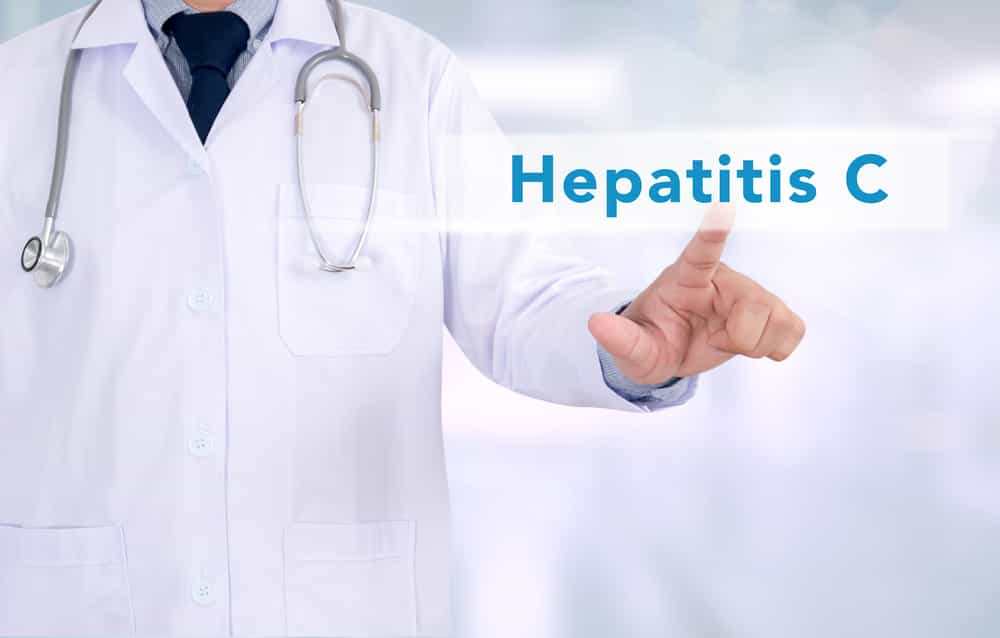Hepatitis C is a viral infectious disease caused by the HCV virus that affects the liver. During the initial infection, mild or no symptoms are usually felt; in some cases, fever, dark urine, abdominal pain may occur, and the skin may take on a yellow color. Early chronic infection is also asymptomatic, but over the years it can often progress to various liver diseases, and occasionally liver cirrhosis, which if not treated effectively leads to serious complications such as liver failure, liver cancer or dilated blood vessels in the esophagus and in the stomach.
HCV infection is therefore rather treacherous: if on the one hand it does not produce symptoms (or very mild symptoms) during the early stages, one realizes that he has contracted the infection only some time later (even decades later!), and with the occurrence of liver damage of various severity, evidenced by routine medical tests.
In acute hepatitis C, people suffer for a short time (up to six months) and then get better on their own. But in 75-58% of cases, the virus does not disappear from the liver, giving rise to chronic hepatitis C. Unlike Hepatitis A, Hepatitis C, in most cases, manifests itself as chronic.
Know your liver!
The best way to understand hepatitis C HCV infection is to understand how your liver works, one of the largest and most important organs in the body. The liver performs important functions for maintaining health:
- cleanses the blood by destroying harmful substances such as alcohol, drugs and medications, and many other harmful chemicals and removing waste
- stores the nutrients (vitamins, fats and sugars) that it takes from food, and distributes them to the body through the blood
- it produces substances necessary for post-injury blood clot, and for the digestion of fats (bile).
That said, we get a better understanding of the direct implications of hepatitis C on our liver: inflammation or swelling. If inflamed, the liver performs its functions worse; obviously, in addition to HCV infection, there are other inflammation factors: alcohol, some medications, and some diseases.
You are at risk if…
Risks of HCV infection significantly increase in these specific cases:
- you shared needles or straws to inject liquids
- have tattoos or piercings done in an unclean environment with non-sterile equipment
- you are part of medical-nursing staff in contact with infected blood or needles
- you had blood transfusions or organ transplants before July 1992
- you received a blood component for clotting problems prior to 1987
- you have been on hemodialysis treatment for a long time due to kidney problems
- your mother contracted HCV
- you have had unprotected sex with multiple partners
- you have had a sexually transmitted disease
- you are HIV positive
If you are unsure of your behaviors related to the causes listed above, or simply want to prevent hepatitis C, talk to your doctor. The life you save may be your own; contact your local healthcare provider to get tested for hepatitis C!
You may also like
Hearing loss: things to know before buying a hearing aid
Choosing a hearing aid isn’t easy, especially if you’ve never used one. They come in different shapes, colors and levels of technology.The first factor in determining which hearing aid to choose is your hearing loss, which could range from very mild to severe. Next, you need to know what you would like it to be… Continue reading Hearing loss: things to know before buying a hearing aid
Small Lymphocytic Lymphoma (SLL): Symptoms and Treatments, Causes and Diagnosis
Small lymphocytic lymphoma (SLL) is a cancer of the immune system. It affects infection-fighting white blood cells called B cells. SLL is a type of non-Hodgkin’s lymphoma, which along with chronic lymphocytic leukemia (CLL) indicates the same type of disease, treated the same way. Whereas in SLL, the cancer cells reside primarily in the lymph… Continue reading Small Lymphocytic Lymphoma (SLL): Symptoms and Treatments, Causes and Diagnosis
Diabetes Type 2: Epidemiology and Prevention
Diabetes Epidemiology Diabetes is a very common disease. New updated data from the new International Diabetes Federation (IDF) Diabetes Atlas show that more than 34 million Americans have diabetes (1 in 10 individuals), of whom approximately 90-95% have type 2 diabetes. In UK the situation is slightly better: with nearly 4 million sufferers, about one… Continue reading Diabetes Type 2: Epidemiology and Prevention
Small Lymphocytic Lymphoma (SLL): Stats, Causes and Diagnosis
Small lymphocytic lymphoma (SLL) is a cancer of the immune system that affects the white blood cells that fight infection, called B cells. SLL is a type of non-Hodgkin’s lymphoma, as is chronic lymphocytic leukemia (CLL). Both cancers are basically the same disease, and are treated in almost the same way. The difference between the… Continue reading Small Lymphocytic Lymphoma (SLL): Stats, Causes and Diagnosis
